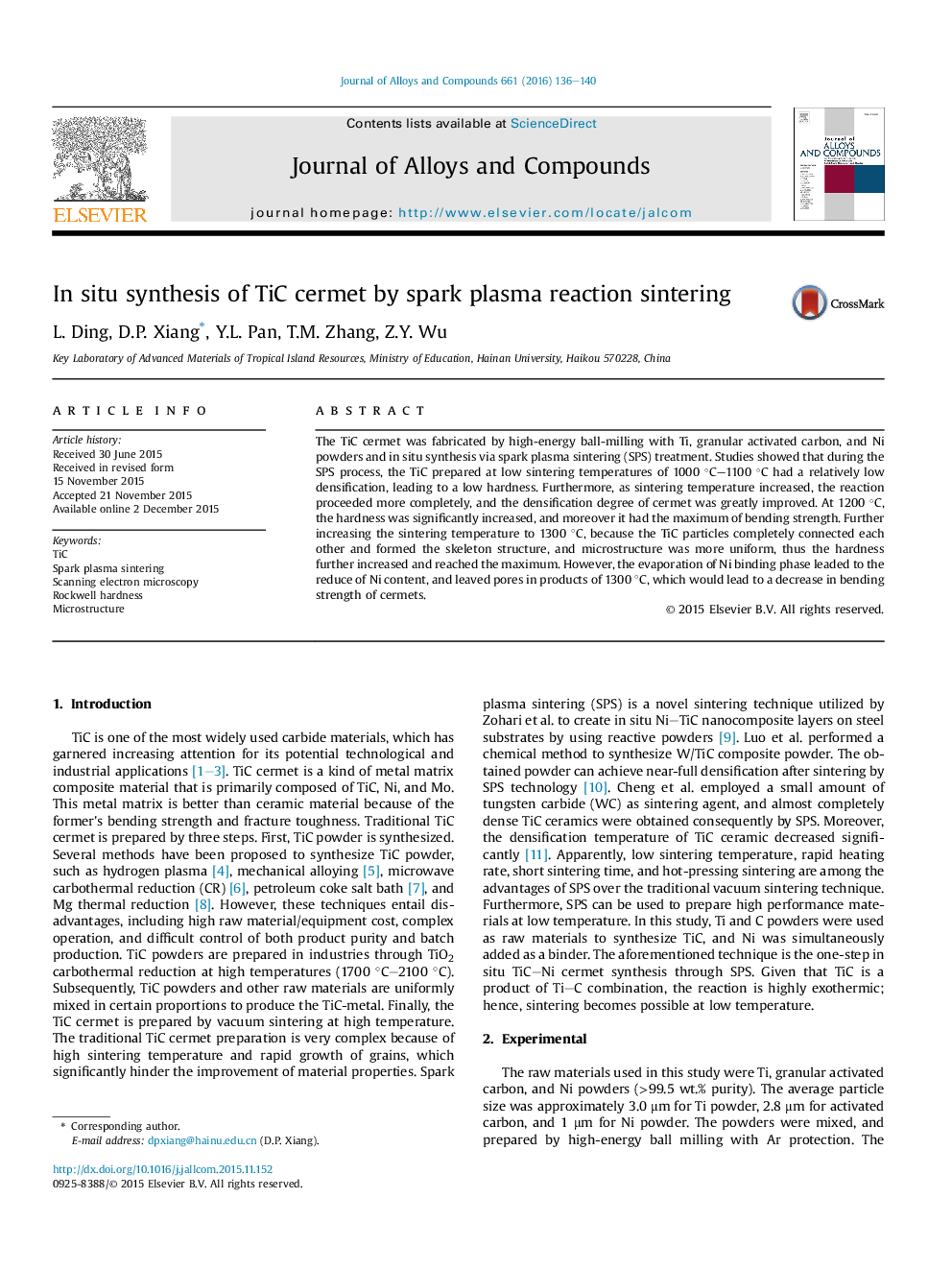| Article ID | Journal | Published Year | Pages | File Type |
|---|---|---|---|---|
| 1607029 | Journal of Alloys and Compounds | 2016 | 5 Pages |
Abstract
The TiC cermet was fabricated by high-energy ball-milling with Ti, granular activated carbon, and Ni powders and in situ synthesis via spark plasma sintering (SPS) treatment. Studies showed that during the SPS process, the TiC prepared at low sintering temperatures of 1000 °C-1100 °C had a relatively low densification, leading to a low hardness. Furthermore, as sintering temperature increased, the reaction proceeded more completely, and the densification degree of cermet was greatly improved. At 1200 °C, the hardness was significantly increased, and moreover it had the maximum of bending strength. Further increasing the sintering temperature to 1300 °C, because the TiC particles completely connected each other and formed the skeleton structure, and microstructure was more uniform, thus the hardness further increased and reached the maximum. However, the evaporation of Ni binding phase leaded to the reduce of Ni content, and leaved pores in products of 1300 °C, which would lead to a decrease in bending strength of cermets.
Related Topics
Physical Sciences and Engineering
Materials Science
Metals and Alloys
Authors
L. Ding, D.P. Xiang, Y.L. Pan, T.M. Zhang, Z.Y. Wu,
